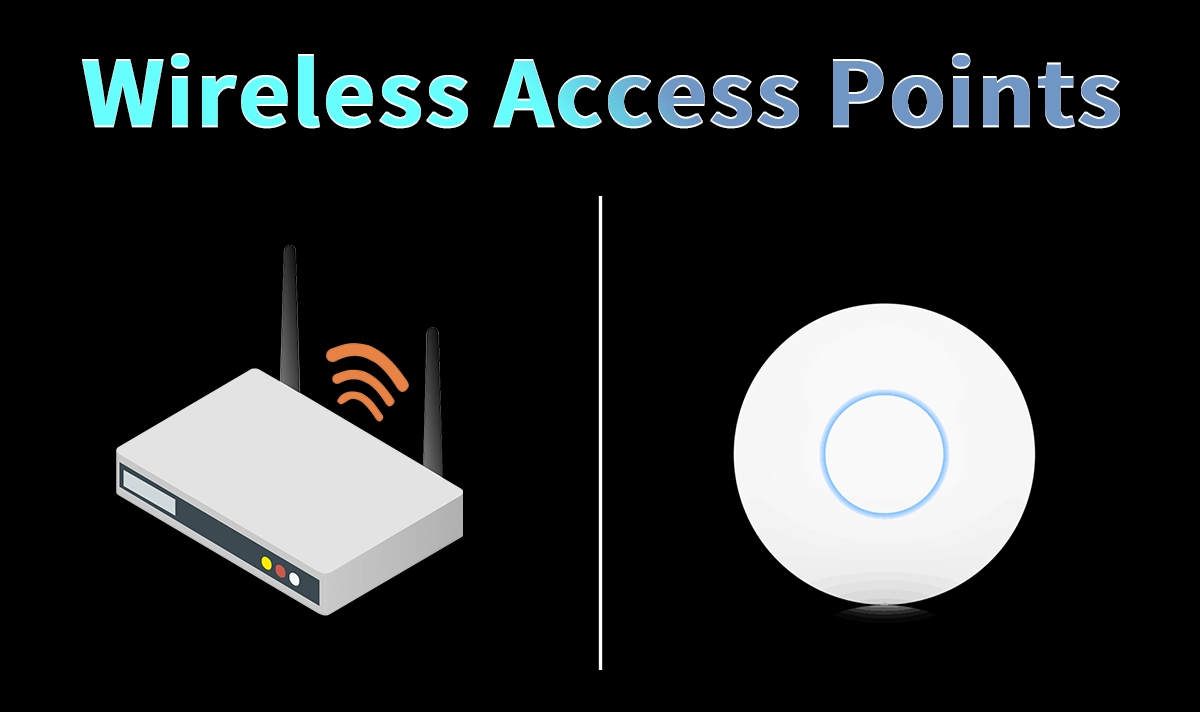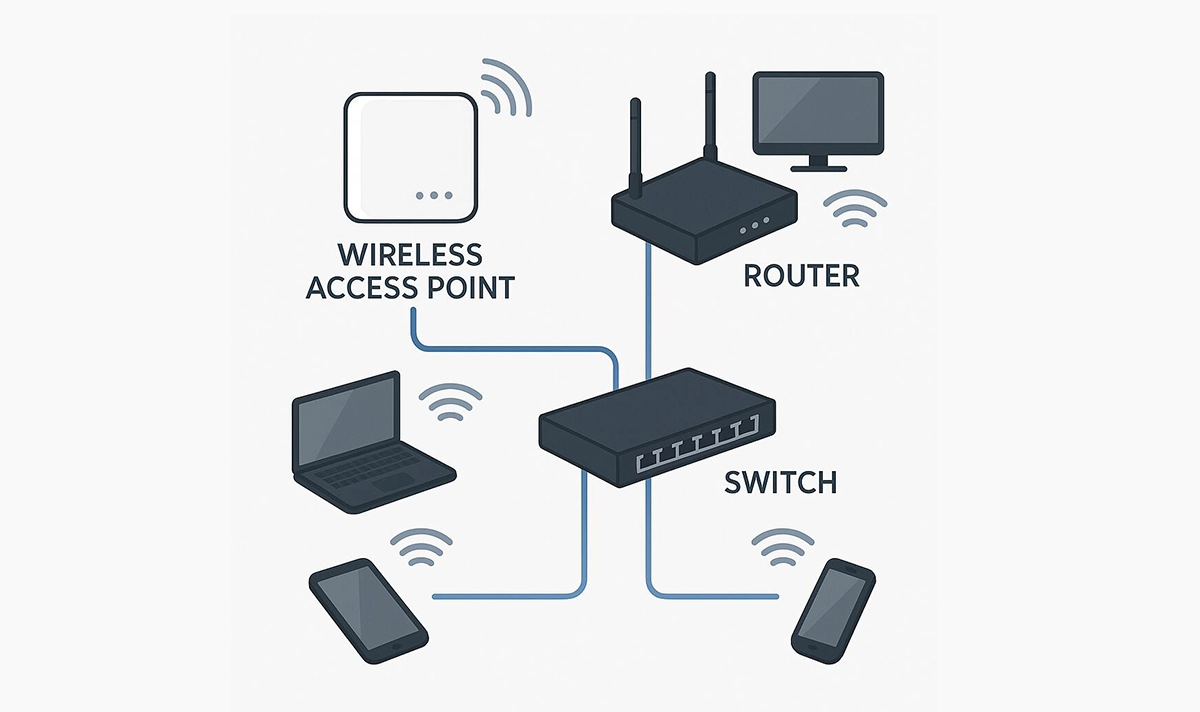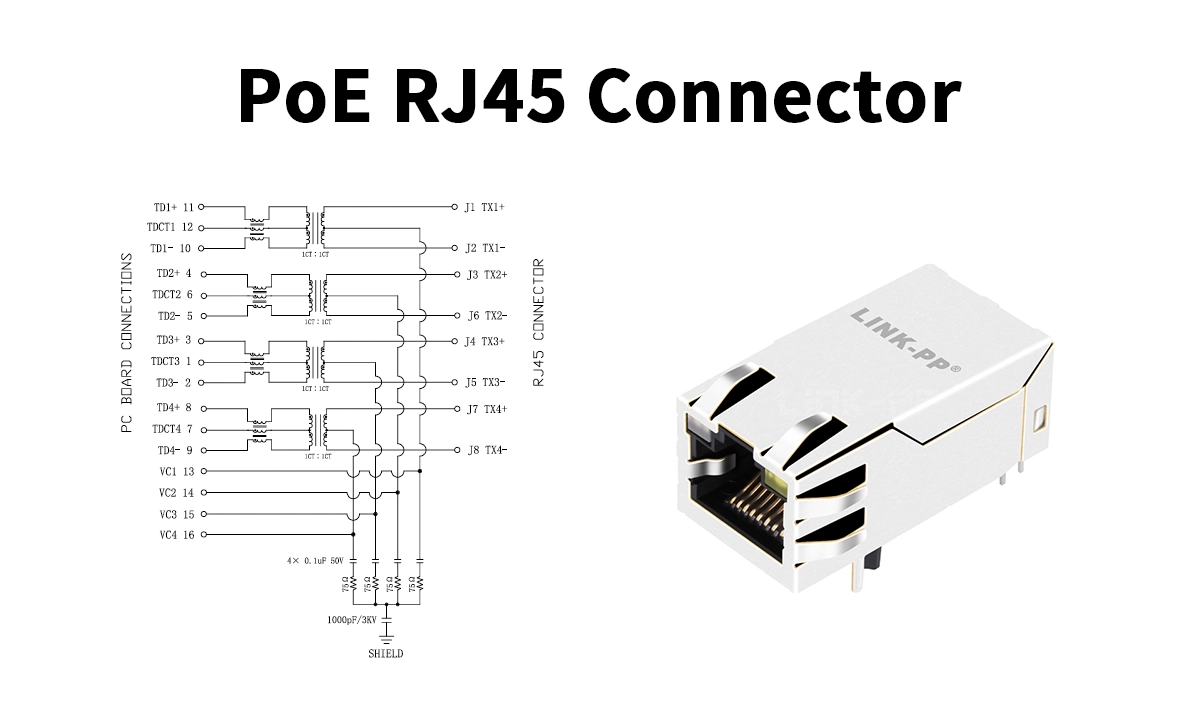
① Introduction
Wireless Access Points (WAPs) are a foundational technology for modern Wi-Fi networks. As enterprises, campuses, and even homes demand seamless, high-performance wireless coverage, understanding what a WAP is, how it differs from related devices, and how it’s built becomes crucial. In this article, we dive into the principles, deployment models, and how components like the LINK-PP LPJK6072AONL PoE RJ45 connector play a key role in WAP hardware.
② What Is a Wireless Access Point (WAP)?
A Wireless Access Point (WAP) — often simply called an Access Point (AP) — is a networking device that provides wireless clients (laptops, phones, IoT, etc.) with connectivity to a wired local area network (LAN).
In practice:
A WAP is wired to a switch or router via Ethernet
It broadcasts one or more Wi-Fi networks (SSIDs)
Wireless clients associate to those SSIDs and thus gain access to LAN + Internet
Unlike a wireless router, which combines routing, switching, and wireless functions, a WAP’s primary job is only to bridge wireless clients to the wired network.
③ How Does a WAP Work? Key Components & Protocols

▶ Basic Signal Flow
The WAP receives Ethernet frames from the wired network.
It encapsulates data into 802.11 wireless frames, modulates them into radio signals, and transmits them via its antennas.
A wireless client replies; the WAP demodulates, decapsulates, and forwards data onto the wired network.
Thus it functions at OSI Layer 2 (Data Link), acting similarly to a switch or bridge but with radio access.
▶ Wi-Fi Standards & Backward Compatibility
WAPs support multiple generations of Wi-Fi standards — e.g. 802.11n (Wi-Fi 4), 802.11ac (Wi-Fi 5), 802.11ax (Wi-Fi 6 / 6E), and future 802.11be (Wi-Fi 7).
Good WAPs support backward compatibility so older devices can still connect, even if at lower speeds.
▶ Management & Control Protocols
In larger deployments with many WAPs, centralized control is often needed. A common protocol is CAPWAP (Control and Provisioning of Wireless Access Points), specified under RFC 5415, which enables a Wireless LAN Controller (WLC) to manage and push configuration or firmware to multiple WAPs.
WAPs can also support local management (web UI, SSH) or cloud-based controller systems.
▶ Power over Ethernet (PoE)
Many WAPs receive power over the same Ethernet cable used for data, via IEEE 802.3af (PoE) or 802.3at (PoE+). This simplifies deployment, especially in ceiling or wall-mounted installations where separate power wiring is inconvenient.
On the hardware side, the RJ45 connector used in the WAP must support the required current and isolation, and often includes integrated magnetics (transformers, chokes) to maintain signal integrity and electromagnetic compatibility.
④ Types & Deployment Models
▶ Standalone vs Controller-Managed
Standalone (Autonomous) APs: Each WAP is individually managed; suitable for small networks.
Controller-based / Unified APs: Managed centrally via WLC or cloud; ideal for campuses, enterprises.
▶ Root AP, Bridge, Repeater Modes
Root mode: The AP connects to wired network and serves clients.
Bridge / point-to-point / point-to-multipoint: AP links two wired networks wirelessly.
Repeater / extender mode: AP receives existing Wi-Fi and rebroadcasts — but often at reduced throughput vs wired backhaul.
▶ Mesh / Distributed APs
Modern wireless systems may use mesh architectures, where multiple APs interconnect wirelessly and distribute traffic intelligently for coverage, redundancy, and load balancing.
⑤ Key Considerations When Selecting WAPs
When designing or selecting WAPs, some critical technical factors include:
Factor | Importance | Typical Target Values / Remarks |
|---|---|---|
Radio Bands & Throughput | Dual-band (2.4 GHz + 5 GHz) or tri-band ensures capacity | Wi-Fi 6 / 6E or higher preferred |
Number of Spatial Streams / MU-MIMO | Helps support multiple clients simultaneously | 2×2, 3×3, 4×4 or more |
Coverage / Antennas | Antenna gain, beamforming, placement matter | Ceiling, wall, or external antennas |
Backhaul / Ethernet Port | Usually 1 or more Gigabit (or multi-gig) RJ45 ports | Should support link aggregation in high-end |
PoE & Power Budget | Especially for ceiling or unobtrusive installs | Must match site’s PoE budget and distance limits |
Security & Authentication | WPA3, 802.1X / RADIUS, guest isolation, segmentation | |
Management / Scalability | Centralized firmware / config push, monitoring | |
Reliability / Environmental Specs | Temperature range, ruggedness for outdoor / industrial use |
⑥ Integration of LINK-PP LPJK6072AONL in WAP Designs

One often overlooked but critical component in WAP hardware is the RJ45 connector module with integrated magnetics and PoE capability. The LINK-PP LPJK6072AONL is specifically engineered for this role.
From the LPJK6072AAONL Drawing (schematics), we can note:
Designed for PoE applications with maximum current of 350mA per pair
It includes internal magnetic components (transformers / chokes) for signal integrity and common-mode noise suppression.
With 1500Vrms hipot and meets isolation and crosstalk specs over the Ethernet frequency range.
Its operating temperature range is wide (–40 °C to +85 °C), making it suitable for varied environments.
Because the LPJK6072AONL supports both data and power over a single Ethernet cable, it is ideal for WAPs that are PoE-powered and require integrated magnetics — reducing external component count, simplifying design, and improving reliability.
⑦ Real-World Use Cases & Benefits
▶ Enterprise / Campus Deployments
A large office or campus may deploy dozens or hundreds of WAPs. These are centrally managed, support user roaming, load balancing, and dynamic channel/power control to maximize throughput and user experience.
▶ Hotels, Retail, Public Venues
Provide segmented guest and staff Wi-Fi, support captive portals, isolation, and localized coverage in high-density areas (lobbies, meeting rooms).
▶ IoT / Smart Buildings
WAPs serve as access points for sensors, cameras, and control devices. Because many such devices use low power, PoE-enabled WAPs facilitate simple deployments.
▶ Home / SOHO Use
In homes with large footprints or challenging layouts, adding one or more WAPs (wired backhaul) extends coverage more reliably than mesh repeaters.
⑧ WAP vs Router vs Extender — Clarifying the Differences
Router: Routes between networks (e.g. your LAN and the Internet), manages NAT, firewall rules, DHCP, etc.
WAP / Access Point: Provides wireless connectivity to LAN clients but does not route between networks.
Wi-Fi Extender / Repeater: Captures a Wi-Fi signal and rebroadcasts it, often halving throughput due to retransmission overhead.
In small networks, consumer routers often bundle routing + switch + WAP functionalities in one box. But in enterprise or scalable systems, these functions are separated for performance, flexibility, and reliability.
⑨ Conclusion & Call to Action
Wireless Access Points (WAPs) are essential building blocks in modern wireless networks, providing the bridge between Wi-Fi clients and the wired LAN. When designing or selecting WAP hardware, components like RJ45 connectors with integrated PoE and magnetics matter just as much as the radio performance.
If you're designing or evaluating WAP hardware, consider the LINK-PP PoE RJ45 connector, which offers integrated magnetics and supports PoE for reliable, compact designs.
👉 Visit the LPJK6072AONL product page on LINK-PP’s official store to explore specifications and request samples: LINK-PP LPJK6072AONL


